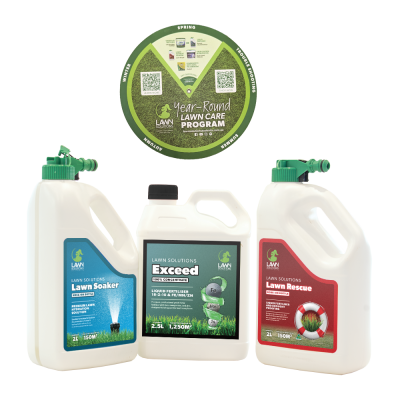There are many old wives’ tales when it comes to lawn care. While some of them do hold some logic, it can be difficult to know what to do to keep your lawn at its best. We’ve searched the internet to tell you which of these tales are true and what is just a silly old myth.
Night watering’s are best

You may have heard that the best time to water your lawn is at night. While this may seem reasonable as it can help prevent your lawn from losing water to evaporation, over time frequent night watering can create damp conditions perfect for diseases and funguses to grow.
So, when should you water? Watering in early mornings is best when there is less wind and less chance of water loss from heat-related evaporation. By watering in the morning, the lawn will have enough time to absorb water before the heat of the day. This will also allow the lawn to dry to help avoid fungal diseases.
Mowing a lawn short means you don’t have to mow as often

Many of you may dread the thought of having to give your lawn another mow, mowing your lawn short and leaving it for a few weeks sounds like the perfect solution. However, mowing irregularly and short can cause extra stress and damage.
When mowing the golden rule is to only remove one-third of the leaf blade with each mow.

By only removing one-third your lawn will be able to stay in its peak condition. Although this does require you to mow regularly, your lawn will be able to have a steady nutrient uptake and will look more consistent throughout.
A brown lawn is a dead lawn

In the cooler months, lawns can lose some colour. This is because there is less sunlight to produce chlorophyll resulting in less photosynthesis and a loss of colour. However, there is no need to panic when this happens as the grass will return to its previous green state when temperatures begin to warm up again.
To help your lawn retain its colour better in winter, increase your mowing height. This will help create a thicker canopy that is better able to retain colour as more sunlight can be absorbed.
So, although your winter lawn will lose a bit of colour, the grass is really greener on the summer side.
If you are wanting to keep your lawn looking great with a lush green colour in winter have a look at ColourGuard Plus. ColourGuard is a spray-on green pigment that is absorbed into the leaf instantly improving the colour of your lawn. It can be used year-round, works on all lawns and in all climates.

Grass with a high drought tolerance doesn’t need to be watered

Many turf varieties on the market with high drought-tolerances, like TifTuf Hybrid Bermuda, are able to survive long hot periods without water. Although these turf varieties can last longer periods without water than most, they can’t survive with none.
However, once established drought tolerant turf varieties can survive and thrive for longer time periods with far less water.
You can only lay turf in spring and summer

There is a common misconception that warm-season turf varieties cannot be laid when the temperatures have dropped. While spring and summer are the ideal times to lay turf, your new lawn can be installed at any time year-round. In fact, a benefit of installing in autumn and winter is lower water usage.
When laying turf in winter it is important to keep in mind that the lawn will not root down properly until the weather begins to warm up again. This doesn’t mean that the lawn will die off, it will simply be sitting idle until it gets some warmer temperatures.

Vinegar can kill weeds
In short, yes vinegar can kill weeds, however when applied to your lawn it can harm it too. Vinegar will only treat above-ground vegetation, leaving the underground root systems unharmed, letting most weeds grow back.
Selective herbicides are the best option when removing common weeds from your lawn. Estate Herbicide and All Purpose Weed Control are both great options to use when treating common weeds.


